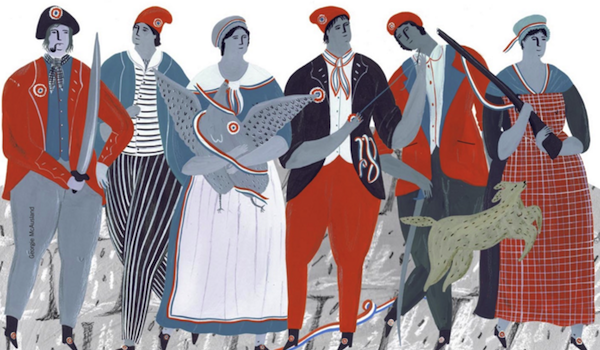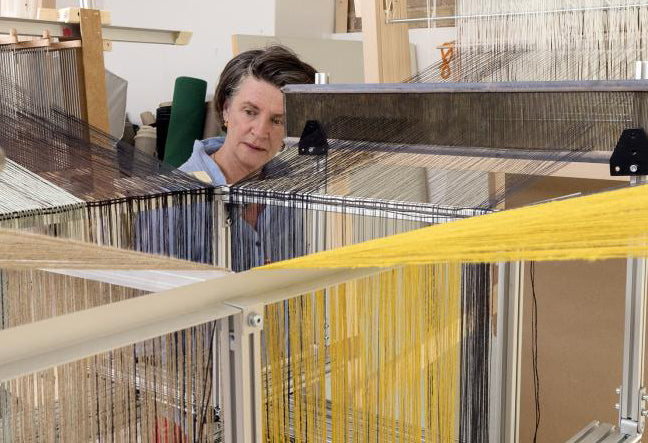
Vive La France
Today celebrates the Storming of the Bastille in the 1789 French Revolution. The revolution itself made its mark on fashion and changed the way ribbons and trimmings were made. Dress simplified dramatically and the industry had to adapt to the retreat of ornamentation. Grosgrain was used to create the tricolour cockades of the revolution. The textured design could be thought of as a forerunner to 19th century jacquard ribbons: but the threads were picked out by hand rather than the binary selection of the jacquard machine.

The sight of les tricoteuse, the women who sat impassively judging, recording and knitting without pause as the tumbrels and the heads rolled by, must have been one of the most chilling scenes of the French Revolution. In his novel A Tale of Two Cities, Dickens went one step further. His unforgettable character, Madame Defarge, created a knitted register of those who would soon be sent to ‘the national razor’. As a rebel, once your name was entered into her coded textile, your fate was sealed. Those who wanted to escape the revolutionary zeal of les tricoteuse and the guillotine would have been wise to display the sartorial symbols of a good patriotic citizen. The pre-revolutionary excesses of the Ancien Régime; the silks, satins and elaborate hairdressing were swiftly replaced by a dress code that echoed the plan clothing of the ‘sans-culottes’ (a derogatory term for the poorer members of the third estate who could not afford the fashionable knee-length culotte).

The correct finishing touch to a citizen’s outfit was ‘the bonnet rouge’; a soft, red, conical hat also known as a Phrygian cap. Its origin as a symbol of liberty lies in the fact that it was worn by freed slaves in Roman times. In France in the 1790s it was often embellished with a tricolour cockade (a knot of ribbons) which merged the blue and red of Paris with the white of the disposed Bourbon monarchy – a decorative touch that could put you head and shoulders above your less stylish comrades.

We're celebrating France's Fête Nationale with 17.89% off subscriptions with a one-off payment and back issues. Discount can also be applied to renewals. To enjoy your discount, please use the code BASTILLE at checkout.

French style café curtains that cover the lower half of a casement are great for screening small or unusually shaped windows, such as in a bathroom. In issue 29 Christina Strutt from Cabbages & Roses shared her café curtains project from her book, Homemade Vintage, with us. The curtains in this project are made from tea towels but any lightweight cotton fabric will work, especially checked fabric. The beauty of using tea towels is that they do not need hemming! Click here to view the project.

République Française Liberté Égalité; this block-printed wallpaper was produced as propaganda during the French Revolution, circa 1792. The paper includes symbols of the revolution such as the Phrygian cap, tricolour cockades and ribbons. As well as fighting in political circles and on the battlefield, the revolutionaries thought it important to reinforce their cause on the domestic front. This is one of many in the permanent collections at the Cooper Hewitt Museum, New York www.cooperhewitt.org

Hella Jonger: Interlace at Lafayette Anticipations, Paris One of international design's most influential figures. Working from her Jongeriuslab in Berlin, her theoretical and experimental research explores multiple themes, often addressing the significance of colours and materials. The project she has imagined for Lafayette Anticipations is centred around textile and weaving. In the world of fast fashion, textiles have become a throwaway product. This exhibition questions how we consider textiles within our lives, and the cultural, social and economic implications of textile production and consumption today.www.lafayetteanticipations.com

